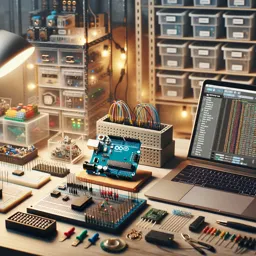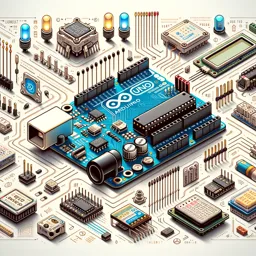Introduction
Arduino stands at the heart of many robotics projects, offering a versatile and accessible platform for both beginners and seasoned hobbyists. One often overlooked yet powerful approach in robotics is modular design, which allows for rapid prototyping, easy upgrades, and limitless creativity. In this article, we’ll explore how Arduino can be used to implement modular architecture in your robotics projects.
What Is Modular Design in Robotics?
Modular design is the practice of building robots using separate, interchangeable modules. Each module performs a distinct function, such as sensing, locomotion, or communication. By using standardized connectors and interfaces, modules can be easily swapped or upgraded without overhauling the entire robot. This approach accelerates learning and experimentation.
Why Use Arduino for Modular Robotics?
- Open Source and Expandable: Arduino boards support a wide range of sensors, actuators, and shields, making them ideal for modular setups.
- Community Support: A global community provides libraries, tutorials, and troubleshooting tips, lowering the barriers to innovation.
- Programming Simplicity: Arduino’s user-friendly IDE and code structure expedite prototyping and debugging.
Building Modular Robots with Arduino
1. Core Controller Module
This is the brain of your robot, typically an Arduino Uno, Mega, or Nano. Choose a board that fits your project’s needs for processing power and input/output.
2. Sensor Modules
These can include distance sensors (like ultrasonic or infrared), line-following sensors, or environmental monitors. Use standardized headers to plug them into your main board.
3. Locomotion Modules
Wheels, tracked bases, or robotic legs can be added as separate modules, each with their own motor drivers and power supplies if needed.
4. Communication Modules
Add Bluetooth, Wi-Fi, or radio frequency (RF) modules for remote control or inter-robot communication.
5. Expansion Ideas
Design custom modules for grippers, cameras, or other add-ons. By keeping connections consistent—such as compatible voltage levels and pin layouts—you ensure interoperability between modules.
Advantages of Modular Robotics with Arduino
- Experiment with different robot configurations quickly
- Upgrade individual modules without redesigning the entire system
- Encourage collaborative development, as modules can be independently designed and tested
Tips for Success
- Use standardized connectors, such as headers or magnetic snaps, for easy swapping of modules
- Label each module clearly to avoid confusion during assembly
- Document the pin connections and power requirements for each module
Conclusion
By embracing modular design, robotics enthusiasts can unlock endless possibilities for learning and innovation. Arduino’s flexibility, accessible programming environment, and broad ecosystem make it the perfect foundation for your modular robot projects. Begin with a basic core and expand incrementally—your imagination is the only limit!



















